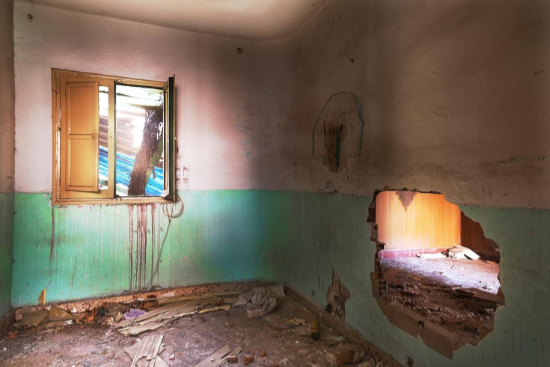What If My Rental Home Is Unfit To Live In?

Renters, listen up! If you've ever found yourself in a situation where you feel that your rental property isn't fit to live in, this blog post is for you. Maybe you’ve got black mould, damp, draughty windows, or a leaking roof?
We understand that it can be a challenging situation to navigate, especially when you're unsure about your rights and the steps to take. Don't worry - we're here to walk you through the process, using the Housing Health and Safety Rating System (HHSRS) as our guide.
Step 1: Understand What Makes a Property Unfit
This is the first and fundamental step in the process. You must be aware of the various factors that can render a property unfit for habitation. These could include:
- Damp and mould growth: These can lead to respiratory problems and allergies. Check for black spots on walls, ceilings, and around windows.
- Excessive cold: If your home can't be effectively heated, it could lead to a variety of health issues.
- Lack of ventilation: Proper ventilation helps maintain indoor air quality. Check for windows that don't open or lack of extractor fans in bathrooms.
- Faulty gas or electrical installations: These can pose significant safety risks, including fire and carbon monoxide poisoning.
Step 2: Know Your Rights
As a tenant, you have specific rights under UK law:
- Right to a safe and healthy home: Your landlord must ensure that the property is safe and free from health hazards.
- Right to have repairs done: Your landlord is responsible for most repairs.
Remember: you can rate your landlord on Marks Out Of Tenancy
Step 3: Evaluate Your Living Conditions
Use the HHSRS as a guide to identify potential hazards in your home. If you identify any Category 1 hazards (i.e., those posing a serious and immediate risk), make a note of them and take photos if possible.
Step 4: Approach Your Landlord
When addressing your landlord, it's essential to:
- Write a formal letter or email: Outline the problems you've identified, preferably with photographic evidence, and request that they carry out necessary repairs.
- Give them reasonable time to respond: Typically, 14 days is considered reasonable.
Read guidance on approaching your landlord
Step 5: Involve the Local Authority
If your landlord is unresponsive or refuses to carry out necessary repairs:
- Contact your local council's housing department: Explain the situation and provide them with any evidence you have.
- Request an HHSRS assessment: They'll be able to assess the property and take any necessary action against your landlord.
Step 6: Understand the Powers of Local Authorities
Local authorities have many enforcement powers - they can:
- Issue an improvement notice: This compels your landlord to carry out specific repairs or improvements.
- Carry out emergency remedial action: In urgent situations, the council can step in to carry out the work and bill the landlord.
- Prohibit use of the property: In extreme cases, they can prevent the property from being rented until it's made safe.
Step 7: Understand the Health Impacts
Physical health: Unfit housing can lead to respiratory problems, allergies, and increased risk of accidents.
Mental health: The stress of living in poor conditions can lead to anxiety and depression.
Step 8: Don't Suffer in Silence
If you're still having issues:
- Contact a housing charity like Shelter: They can provide advice and support.
- Consult with Citizens Advice: They can help you understand your rights and next steps.
Remember, living in an unfit property is not only uncomfortable—it's a serious risk to your health and well-being. Always take action if you're in this situation.
